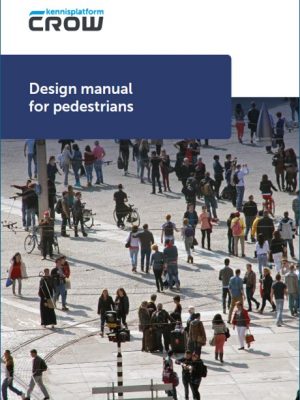This manual clusters all the knowledge about road safety in the Netherlands.
Part 1 seeks to get a handle on the subject of road safety.
Part 2 addresses measures that can be taken, focusing on engineering, education and enforcement, and push, pull and persuasion.
Part 3 presents an overview of practical problems and how these can be tackled.
Table of content
Summary
Introduction
I.1 That won’t happen to me…
I.2 About this manual
I.2.1 Target groups
I.2.2 Objectives
I.3 Document structure and reading guide
I.4 Delineation
I.4.1 Safety of the road traffic system
I.4.2 Different kinds of safety
I.4.3 Different kinds of transport
Bibliography
Part 1 – Getting a handle on road safety
1 Theory
1.1 Terms and approaches
1.2 Psychological aspects
1.3 Mechanical aspects
2 Developments and trends
2.1 Developments in road safety over the years
2.2 Road safety measures taken over the years
2.3 The social costs of road unsafety
2.4 The Netherlands in an international perspective
2.5 Key developments in the future
3 Policy
3.1 National traffic and transport strategy memorandum
3.2 Road safety strategy 2008 – 2020
3.3 European road safety action programme EU
3.4 Policy development
3.5 Organisation of responsibilities
3.6 Policy strategies
3.7 Legislation and regulations
3.8 Monitoring and evaluation of policy
4 Data collection and data analysis
4.1 Introduction
4.2 Traffic and safety data
4.3 Summarising and comparing data
4.4 Common analysis techniques
4.5 Experimental road safety research
4.6 Points of attention when evaluating research
5 Practical research
5.1 Introduction
5.2 Preventive tools
5.3 Curative tools for objective road unsafety
5.4 Tools for subjective road unsafety
Part 2 – Making traffic safer
6 Spatial planning and the road environment
6.1 Cascade approach
6.2 The interaction between spatial disciplines and road safety
6.3 Planning and planning process
6.4 The bridge between urban and rural planning and road safety
6.5 Urban design en road safety
6.6 Outside the built-up area
6.7 Public space and road safety in detail
6.8 Shared Space
6.9 The importance of effective co-operation
6.10 Putting the resident first
6.11 The final phase: view to implementation and management
7 Infrastructure
7.1 Introduction
7.2 Design principles of Sustainable Safety
7.3 Planning and construction of the road infrastructure
7.4 Intersections
7.5 Exit construction
7.6 Pedestrian crossings
7.7 Provisions for specific target groups
7.8 Level railway crossings
7.9 Tunnels
7.10 Residential areas
7.11 Passages
7.12 Area boundaries
7.13 Traffic signs
7.14 Road markings
7.15 Signposting
7.16 Design faults
8 Vehicle safety
8.1 The concept of vehicle safety
8.2 Safety measures
8.3 Context
9 Road safety education
9.1 Introduction
9.2 What is road safety education?
9.3 What people can and cannot learn
9.5 The content of road safety education: target group approach
9.6 Road safety education contents: an approach based on behavioural themes
9.7 The organisation of road safety education in the Netherlands
9.8 The effectiveness of road safety education
9.9 Road safety education in a wider perspective: opportunities and threats
10 Traffic enforcement
10.1 Introduction
10.2 What is traffic enforcement?
10.3 Statutory and organisational aspects of traffic enforcement
10.4 Enforcement communication
10.5 Setting up effective traffic enforcement
10.6 The quality of traffic enforcement
Part 3 – Dangerous behaviour, dangerous groups and what can be done about them
11 Risk-enhancing behaviour in traffic
11.1 Introduction
11.2 Alcohol
11.3 Drugs and medicines
11.4 Fatigue
11.5 Distraction due to mobile phone use while driving
11.6 Aggression
11.7 Speed
11.8 Red light running
11.9 Keeping distance/tailgating
11.10 Failure to use safety devices
12 Specific groups of road users
12.1 Introduction
12.2 Children
12.3 Young people
12.4 Elderly: road users aged 75 and over
12.5 Pedestrians
12.6 Cyclists
12.7 Powered two-wheelers
12.8 Lorries and delivery vans
13 Practical examples
13.1 Developing a road categorisation plan
13.2 Zeeweg to Zandvoort
13.3 Road safety audit: alterations to the Maaswijkweg and construction of a multi-lane roundabout in Spijkenisse
13.4 Designs and design flaws
13.5 Tiel Station
13.6 Goilberdingen, Culemborg
13.7 Sustainable Safety in an area of cultural and historical value
13.8 Road safety on industrial estates
13.9 Behavioural observations at bus lanes and intersections
13.10 Project to educate young motorists
13.11 Speed enforcement and communication on an 80 km/h road
13.12 Section control system
13.13 Reward project in the Gelderland-Midden police region










